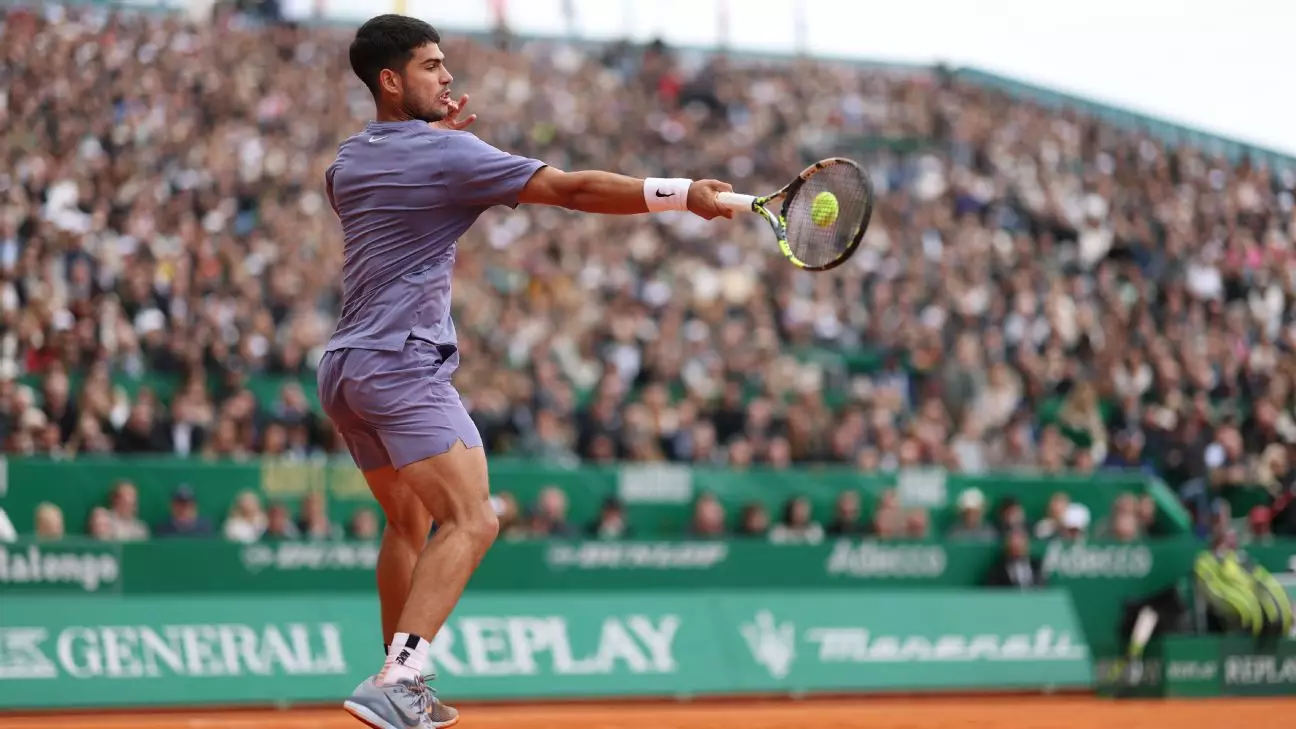Carlos Alcaraz’s journey through tennis has always been marked by resilience and determination. This was on full display as he made a strong comeback at the Italian Open after a self-imposed hiatus due to injury. With a decisive 6-3, 6-3 victory over Serbian qualifier Dusan Lajovic, Alcaraz demonstrated that setbacks can be transformed into opportunities. His match was not merely a testament to his athletic prowess, but also a reflection of his mental fortitude—a quality often underestimated in sports.
Injury: A Controversial Companion
Alcaraz faced a challenging month prior to the Italian Open, withdrawing from the Madrid Open due to complications from an upper right leg injury that initially emerged during the gripping Barcelona Open final. The recurring nature of his injuries has raised eyebrows; some may argue that such physical setbacks stem from the intense pressure on young athletes. Yet, Alcaraz’s decision to don a protective black brace during his comeback match is symbolic. It signifies not only a confrontation with his physical limitations but also an affirmation that he will not be defined by them.
The Art of Performance
For Alcaraz, success is built upon both skill and strategy. His performance against Lajovic showcased that. Starting the match with fireworks, he claimed the first four games, establishing an early dominance. However, the abrupt loss of his serve while trying to close out the first set revealed a critical flaw in his game management. Yet, instead of succumbing to frustration, Alcaraz bounced back with audacity. When faced with adversity, he exemplified how to play not just the opponent, but the game itself, turning a moment of vulnerability into a defining highlight.
Numbers Don’t Lie
Alcaraz’s match statistics—24 winners against 24 unforced errors—illustrate a paradox within his playing style. While his ability to land powerful shots was equalized by his lapses in concentration, this balance speaks to the evolution of his game. It’s a reminder that perfection is an unrealistic expectation; what is more important is the spirit of improvement. As he continues his clay court season, his current record of 10-1 reflects that learning process beautifully. Each match becomes a stepping stone, and with the French Open looming, Alcaraz embodies the eager anticipation of athletic mastery.
The Competition Heats Up
Looking ahead, Alcaraz’s next encounter against Laslo Djere promises to be another testing ground. Djere, who recently dispatched 31st-seeded Alex Michelsen, is no easy foe, but Alcaraz enters this matchup with renewed confidence. The thrill of the Italian Open is further amplified by the return of Jannik Sinner, recently cleared from his three-month suspension. The potential collision between Alcaraz and Sinner would not just be a battle of skill, but a clash of narratives—two rising stars of tennis each writing their own story of triumph, adversity, and destiny.
In this competitive landscape, Alcaraz has not just returned; he has reaffirmed his place among the elite, asserting that every setback can indeed lead to a comebacks of epic proportions.


Leave a Reply